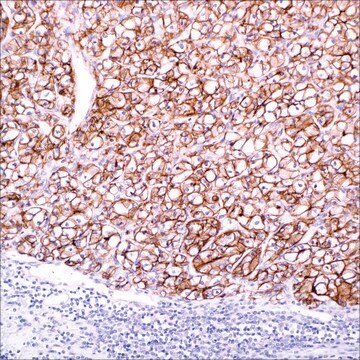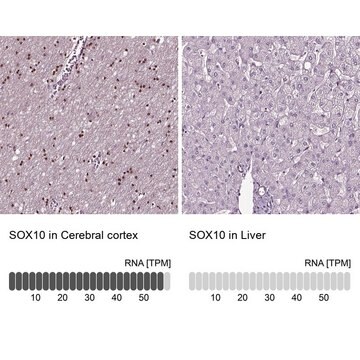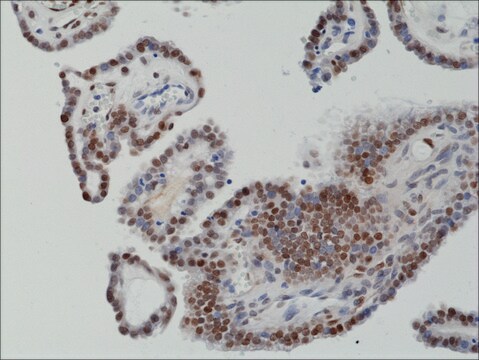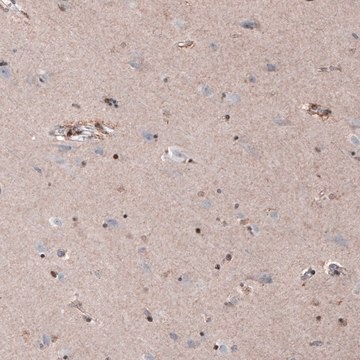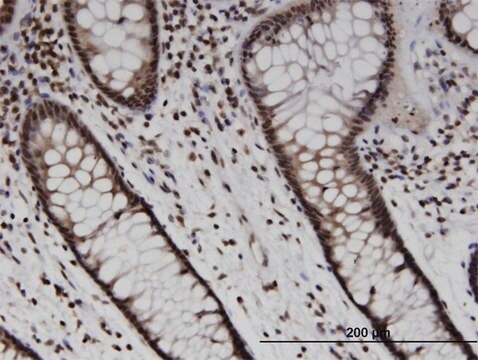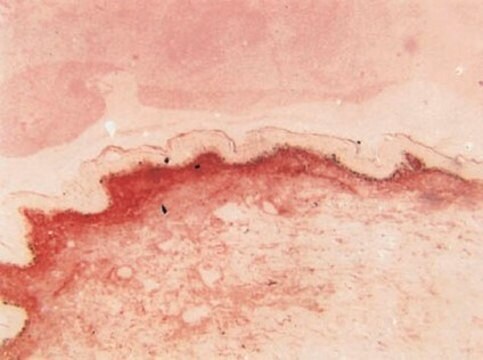383R-1
SOX-10 (EP268) Rabbit Monoclonal Primary Antibody
About This Item
Empfohlene Produkte
Biologische Quelle
rabbit
Qualitätsniveau
100
500
Konjugat
unconjugated
Antikörperform
culture supernatant
Antikörper-Produkttyp
primary antibodies
Klon
EP268, monoclonal
Beschreibung
(For In Vitro Diagnostic Use in Select Regions (See Chart))
Form
buffered aqueous solution
Speziesreaktivität
human
Verpackung
vial of 0.1 mL concentrate (383R-14)
vial of 0.5 mL concentrate (383R-15)
bottle of 1.0 mL predilute (383R-17)
vial of 1.0 mL concentrate (383R-16)
bottle of 7.0 mL predilute (383R-18)
Hersteller/Markenname
Cell Marque™
Methode(n)
immunohistochemistry (formalin-fixed, paraffin-embedded sections): 1:50-1:200
Isotyp
IgG
Kontrolle
melanoma, skin melanocytes
Versandbedingung
wet ice
Lagertemp.
2-8°C
Visualisierung
nuclear
Angaben zum Gen
human ... SOX10(6663)
Allgemeine Beschreibung
Qualität
 IVD |  IVD |  IVD | RUO |
Verlinkung
Physikalische Form
Angaben zur Herstellung
Sonstige Hinweise
Rechtliche Hinweise
Sie haben nicht das passende Produkt gefunden?
Probieren Sie unser Produkt-Auswahlhilfe. aus.
Analysenzertifikate (COA)
Suchen Sie nach Analysenzertifikate (COA), indem Sie die Lot-/Chargennummer des Produkts eingeben. Lot- und Chargennummern sind auf dem Produktetikett hinter den Wörtern ‘Lot’ oder ‘Batch’ (Lot oder Charge) zu finden.
Besitzen Sie dieses Produkt bereits?
In der Dokumentenbibliothek finden Sie die Dokumentation zu den Produkten, die Sie kürzlich erworben haben.
Artikel
Immunohistochemistry (IHC) techniques and applications have greatly improved, dermatopathology is still largely based on H&E stained slides.This paper outlines ways in which IHC antibodies can be utilized for dermatopathology.
Verwandter Inhalt
Diagnostic immunohistochemistry overview highlights its importance in cancer diagnosis and detecting infectious diseases in modern clinical pathology.
Unser Team von Wissenschaftlern verfügt über Erfahrung in allen Forschungsbereichen einschließlich Life Science, Materialwissenschaften, chemischer Synthese, Chromatographie, Analytik und vielen mehr..
Setzen Sie sich mit dem technischen Dienst in Verbindung.
